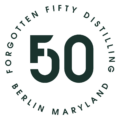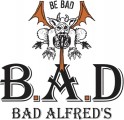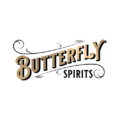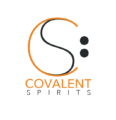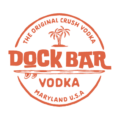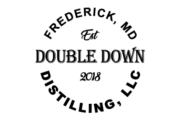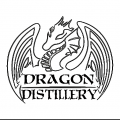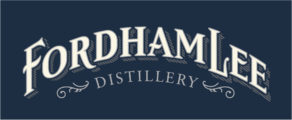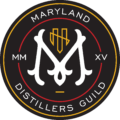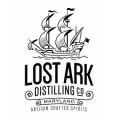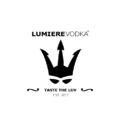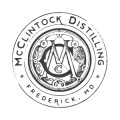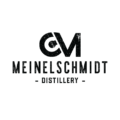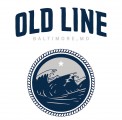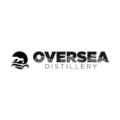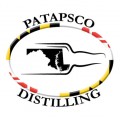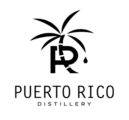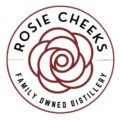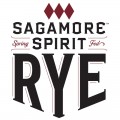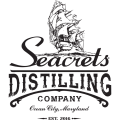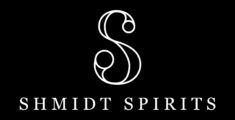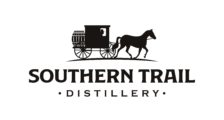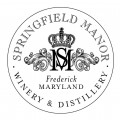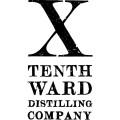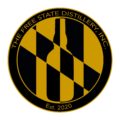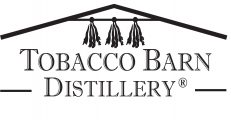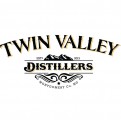Local Liquor: A spirited look at our homegrown hooch
Baltimore City Paper, January 27, 2015
By Brennen Jensen
Whiskey-making is back in Baltimore.
A trickle of pure corn whiskey is distilled at Louthan Distilling. (J.M. Giordano)
On a recent Friday morning, with anticipation and exhilaration trumping most of my trepidation, I raised a plastic shot glass of amber liquid to my lips for an initial taste of Louthan Distilling’s Oak-Aged Corn Whiskey, a distilled spirit born, not in Kentucky or Tennessee, but Lauraville.
“It’s going to be a little bit harsh and intense,” warns distillery co-founder Kelsey Louthan, noting that I’m sampling a 120-proof version of the spirit. When the bottled form hits store shelves early next month it will be cut with water to a smoother, 93-proof.
Woo-hah. Yeah. It’s a bit hot, especially the lively finish. But it’s also rife with corny sweetness and a distinct and not-unpleasant woodiness courtesy of some 60 days spent “aging” in a gallon jar filled with oak shavings.
Also on hand for my distillery tour is the operation’s other half, Kelsey’s father, Len Louthan. But then, “tour” is kind of an ambitious term. Louthan Distilling takes up but a 400-square-foot corner of a multitenant warehouse just off Harford Road where the better-known business is Zeke’s Coffee.
I’ve visited bourbon distilleries in Bardstown and Scotch makers in the Highlands, but this is a little different. A 40-gallon still sits on a table surrounded by four, 50-gallon sterilized plastic trash cans serving as fermenters (where corn, water, and yeast go to work making alcohol). The “bonded warehouse” is a small, chain-link-encased storage area behind a padlock where dozens of glass jars full of varying shades of amber fluid repose on metal shelving.
“I looked at it as a challenge,” says Len Louthan, who runs an engineering consultancy business by day, leaving Kelsey to make most of the whiskey. “From a business standpoint, it looks like a great thing to get into right now. The still is of my own design and with my engineering background it wasn’t that difficult to bring about.”
His handiwork might be modest in scale, but with its glowing temperature gauges and such, it’s not to be confused with something an overall-clad Buford and Billy-Bob might operate in a mountain holler. Len Louthan says an “electronic process controller” helps the contraption turn out a steady trickle of “white dog,” which presently is emptying into a glass jar.
“This is going to be a blast,” says Kelsey Louthan, happy to have swapped her job as café manager for a title she playfully dubs “master distiller, head bottler, and chief label applier.”
“I was born in Baltimore and to make whiskey here is exciting,” she adds. “We get to control the flavor and make the whiskey we want to drink.”
For much of our history, of course, what Baltimore wanted to drink was rye whiskey, our city and state’s storied spirit. A hundred-odd years ago, before tastes changed and an industry consolidated, our state distilled the third most whiskey in the country, after Kentucky and Pennsylvania. Maryland rye had serious cachet at bar rails nationwide. But back in 1972, with Nixon in the White House and William Donald Schaefer newly ensconced in the big chair at City Hall, the last batch of Pikesville Maryland Rye came off the stills at Majestic Distilling in Halethorpe. Production moved out of state and distilling dried up here for decades.
And so, corn whiskey is not exactly the homegrown hooch I expected to start flowing again in Baltimore in the wake of the craft-distilling movement. “Yeah, everybody wants to make rye but I sort of like corn better,” Len Louthan says, noting that it’s a historically older form of whiskey and that all their corn comes from Maryland—some even grown at a city farm garden just down the street, for a hyperlocal touch.
Besides going against the grain, the daughter-and-pop scale of our first new distillery is unexpected, too. For a few years now we’ve been hearing how Under Armour founder Kevin Plank, whose net worth Forbes recently pegged at a cool $3 billion, was going into local distilling. Already engaged in the traditional pastime of the 1-percent club—raising thoroughbreds—he launched Sagamore Spirits (named after his horse farm, natch) with talk of turning out something called Triple Rye. Rumor has it, he’s hired up a major-league distiller from Kentucky to do the deed. Efforts to learn where and when this rye might fly proved fruitless. Inquiries were ultimately routed to a PR firm which sent an email reading: “Now is not yet the time for us to unveil those plans.” Based on recent business-page stories, the distillery appears tied up with grand development plans along the Port Covington waterfront.
“Yeah, I guess if we had billions, the setup here would be a little nicer,” Len Louthan says dryly, aware of Plank’s proposition. “I don’t have grand goals. If this can be a nice little business that makes a good whiskey and gets a local following, that’s fine. I don’t see some need to become the next Jim Beam.”
Of course, the burgeoning field of craft distilling is not about creating the next Jim Beam, anymore than craft brewing, which began its boom 20 years ago, aimed to birth the next Anheuser Busch. (Some say both alcohol revivals follow behind the domestic winery renaissance of the 1970s.) “Craft” is all about keeping it real, local, and, to use a now trite and tired term, “artisan.”
Even if Plank never pulls the trigger on his deep-pocketed distilling proposal, the state’s current trickle of liquor is poised to become steady stream. And rye? It happens to be one of the hottest craft spirits around, as recent issues of Whiskey Advocate and Imbibe magazines will tell you. When I first wrote about rye in these pages back in 1998 it was at its nadir—my trip to a liquor store revealed only three rye brands. Today, the shelves fairly groan with the stuff. Marylanders are making it again, too, and there is even a pair of promising plans to bring rye-making back to Mobtown. We have some catching up to do—Oregon has close to 70 craft distillers—but as I set out on a regional spirit quest, I found plenty of folks tackling red tape, troublesome taxes, and a plethora technical challenges to bring booze back.
If Louthan represents Baltimore’s distilling present, then Henry M. Wright Jr. is our distilling past—and perhaps the future, too. The state of Maryland makes it easy to see who’s going into distilling, as folks who acquire a $2,000-a-year distilling license are listed on a government website. I never dreamed, however, when I reached Wright via this list that I would reach Rye Royalty. His father founded a liquor brokerage and bottling business here the year Prohibition ended. Junior followed senior into the business in the early 1960s, and today he is president of the beverage wholesaler Atlantic Wine and Spirits in Halethorpe.
“My father probably sold more rye than anybody in history,” Wright says. “And now myself and my company have the largest collection of vintage rye whiskey in the world. I have pre-Prohibition stuff from the 1880s all the way up to the last Maryland barrel.”
Much of his collection resides throughout his rambling stone manor home perched on a Lutherville hilltop where leaded-glass windows overlook a sea of McMansion roofs. It’s a veritable museum of Maryland whiskey, with signage, antique distilling apparatus, and, of course, bottles. His glass-fronted kitchen cabinets, where one might expect dishware or Rice Krispies boxes, brim with dozens and dozens of dusty rye bottles with names that are but barroom ghosts: Lorely, Rennert (after the hotel), Ryebrook, Wight’s, Monticello, Hunter, and Old Henry. (Alas, many of the seals seem broken so the contents might be bad.) One label I see a lot reads BPR, and Wright explains it stands for Baltimore Pure Rye (whose long-abandoned Dundalk distillery is on the cusp of being demolished). Fans of the brand, he adds, used to affectionately ask bartenders for some “Baltimore Paint Remover.” Wright even has a crazy-rare bottle of Pikesville from Prohibition when it was made in Canada and imported back for “medicinal use.” Cool as the collection is, I’m more interested to hear about his decision to take out a distilling license.
“We’re going make the real McCoy: real Maryland rye,” Wright fairly gushes. “We have a lot of the old formulas from the old brands, some that are handwritten. We have some of the original copper equipment that’s over 100 years old that we’re setting up as we speak. We could be distilling within three months.”
Rye’s death spiral, he believes, began in the postwar years when there was a lack of aged whiskey around due to wartime production disruptions at the distilleries. To stretch the stocks, many companies began mixing the whiskey with grain neutral spirits and promoting a smoother-tasting blended product. The Canadian distillers really got behind blended hooch. Meanwhile, the Mad Men began hyping the hell out of bar-top newcomer, vodka. As Wright saw the rye trade wither around him, he began buying up bottles of whiskey and the old equipment used to make it, including tanks and such from Standard Distilling and Baltimore Pure Rye. Some argued he should sell it off as scrap copper, but he squirreled it away in a warehouse instead.
“I’ve always wanted to bring Maryland rye back—to preserve it and the history,” he says. “I used to be in no hurry, but now that I’m getting older, there is a hurry. It’s not about sales. I just wanted to make it available for those few who want to drink it. Now those few have become a lot.”
The rye revival might be pure serendipity, though he throws a jaundiced eye toward new distillers aging whiskey in methods other than years in full-size oak barrels. He does seem to be taking a page from the locavore-focused craft-distilling playbook with his plans to truck water for his whiskey in from a particular Baltimore county spring and even grow some of his own rye on a farm he owns.
Any other thoughts on all the new faces getting into the rye game? He applauds their enthusiasm, but awaits the results: “I just hope they make good whiskey,” he says. “Not phony stuff.”
Blackwater Distilling became the first Maryland distiller this century when they got up and running four years ago in Stevensville, Queen Anne’s County. Its signature spirit, Sloop Betty vodka, quickly became a well-reviewed hit. While it’s situated across the Bay Bridge, the distillery could have been in our backyard. Company CEO Christopher Cook says it looked all over the state to set up shop, including Baltimore, but while Eastern Shore officials bent over backward to attract the distillery, “in Baltimore there was always pushback,” he says.
From the get-go, the desire was to make rye. But starting with vodka or other unaged spirit is a common way for craft distillers to quickly get product out the door and cash flowing back in. Blackwater sped up this process even further by not actually distilling its vodka, or at least, not very much of it. For Sloop Betty it buys bulk 190-proof neutral spirits (made from organic wheat and sugar cane) which are blended, filtered, cut with local water, and, in the case of the new Sloop Betty Honey, flavored with local-sourced honey before bottling.
“I think we’ve been transparent about that,” Cook says. “From a volume perspective it made the most sense.”
Sourcing neutral spirits is one thing, but there was a bit of a kerfuffle in the craft-distilling scene last year when some so-called craft whiskey makers were outed in the press for buying bulk whiskey from either an industrial-scale plant in Indiana, or across the border in Canada. With careful wording on the label and slick marketing, they launched their pricey spirits into a market hungry for all things local and handcrafted. (Templeton, Tin Cup, and WhistlePig are some of the brands so accused.)
Blackwater now has a pair of stills—a 500-gallon, and a 100-gallon—that are cranking out a soon-to-debut line of rums. “We’re not yet in the rye game in terms of having a product on the shelf,” Cook says. “As far as the distillation of rye, we have video evidence of being the first in over 40 years to actually legally distill rye in the state of Maryland, for whatever that’s worth.”
That was the spring of 2013, and Blackwater’s been making prototype rye batches and tweaking things ever since. Cook does hope to have an unaged rye out by year-end and Blackwater has been putting some rye in traditional barrels for an 18-month to two-year nap. Complicating things is the decision to be organic and locally sourced when possible.
“Most rye in Maryland is tilled back into the ground as a cover crop so to find high-quality rye has been an issue for us,” Cook says.
The award for having the first Maryland-made rye on the market goes to Lyon Distilling, Blackwater’s Eastern Shore neighbor in St. Michaels. It opened the doors in a historic mill building and fired up a trio of 26-gallon pot stills in 2013. Rum is its signature product and it has a few varieties out, including a dark, barrel-aged version.
“Most of our business is on site because St. Michaels is a very popular destination,” says distiller and co-founder, Ben Lyon. “We’re a big sailing town and sailors like their rum. It’s really a community that a distiller fits into pretty well.”
His foray into rye began last spring when Lyon put its first rye into a variety of small-sized barrels designed to speed up the wood interaction. “On Dec. 6, the anniversary prohibition ended, we released a white rye to the public and were the first Maryland rye whiskey on the market in over 40 years,” Lyon says.
He hopes to release the first of his aged rye in a few months. Certainly, Wright might bristle at the white stuff being called Maryland rye “whiskey,” but the fed’s requirements to earn this designation say only that whiskey must be stored in oak containers. It just doesn’t say for how long. For a spirit to be deemed “straight whiskey,” it needs twos year in wood, but otherwise . . .
“Basically, you put it in a new barrel and then nearly immediately pour it,” Lyon says. “But I truly enjoy drinking white whiskey.”
“My ultimate vision is to see a Maryland Rye Trail like Kentucky now has with its bourbon trail,” he adds, referencing a co-marketing concept where promotional materials encourage tourists to visit multiple distilleries. “I’d love to see a number of people doing some great rye and reviving that Maryland history.”
Such a trail would likely not include Rockville’s Twin Valley Distillers, since they don’t make rye (yet, anyway). But I’d be remiss if I didn’t mention perhaps the most curious distillery in the state. First off, it’s in Montgomery County—not exactly the most booze-friendly locale, seeing how an almighty liquor control board oversees a government monopoly on wholesale alcohol distribution. But Edgardo Zuniga, the Costa Rican-born chef-turned-distiller, managed to make it work somehow. What’s even more curious, however, is that Zuniga doesn’t drink. Yes, you read that right.
“Of course I taste the products,” Zuniga says. “When I used to be a cook I tasted everything I cooked, but it didn’t mean that I ate everything I cooked.”
It seems he has tongue for spirits but not the stomach for them. From a garage-bay operation deep in an industrial park, he produces vodka, rums, corn whiskey, and the state’s first bourbon in a long, long time. (It’s aged in 5-gallon barrels stored in heated stock room.) He cranks out 250 bottles of the aged spirits a week from a pair of 125-gallon stills.
His grain all comes from local farmers—and it goes back there too. They come in pickups at night to nab the spent grain, which makes a terrific animal feed. “I get eggs, pork chops, steaks—it’s a great trade,” Zuniga says.
Of course, following the craft distilling trail down to Washington, D.C. might be odd move for a City Paper with “Baltimore” in its name, but it’s interesting how the district, with no distilling history to speak of and a craft-brewing scene only now catching up with ours, manages to have two distilleries up and running. The newest, One Eight Distilling, just opened this month.
I take the MARC Penn line down to learn more. As the train rattles southward it passes the town of Relay, where you can easily see remnants of the Maryland Distilling Co. plant built right after Prohibition (later sold to Seagram and famous for the Calvert brand of whiskey). The trio of six-story brick warehouses for barrel aging is a landmark. Today, it’s a bottling and distribution center for London-based Diageo, the largest alcoholic-drinks maker in the world. (You might have heard of a few of its little brands: Guinness, Johnnie Walker, Smirnoff, Tanqueray . . . ) As it happens, MARC’s Camden line goes by the old Majestic Distilling plant, where it now just bottles beverages.
It struck me that just as we live among the brick-and-mortar vestiges of Baltimore big-brewing days, such as the now-repurposed National, Gunther, and American breweries, so too are distilling edifices of yore all around: in Dundalk, Cockeysville, Westminster, and right in town, where Cold Spring meets the JFX. The copula-topped stone building there, at the center of what’s now a vinegar plant, was once the Melvale Rye Distillery. And whiskey left municipal marks on us in other ways too, if you recall that Johns Hopkins and the Walters family both made money selling the stuff.
Both of D.C.’s distillers are in the Ivy City neighborhood, an orphaned industrial zone in the shadow of the massive, art deco Hecht Company warehouse—a study in glass-block construction currently undergoing a mixed-use redevelopment. The budget-motel bustle of New York Avenue is the northwestern border of what’s becoming a craft-drinks destination, as it’s also home to a brewery and with two more distilleries in the offing.
New Columbia Distillers has turned out Green Hat Gin here since 2012. Saul Mutchnick quickly starts explaining the process of creating the distillery’s gin flavor profiles and how its winter seasonal gin uses things such as caraway seeds and star anise and spends about three months in used apple-brandy barrels. It ends up being close to the Scandinavian drink, aquavit, and I don’t say no to a quick and tasty sample. But my eyes naturally fall to a collection of full-size barrels along one wall whose ends read Rye Whiskey.
Gin is New Columbia’s thing, but the company couldn’t resist the siren song of rye. It’s been cranking it out with various recipes for some time now.
“It’s kind of a pain in the ass,” Mutchnick confesses, when pondering the mysteries of aging. “We’ve been telling people we will release it when it’s ready, somewhere between two and eight years. The oldest barrels we have are about a year old at this point.”
A few blocks away is the brand-new 11,000-square-foot One Eight Distilling. Its tasting room alone is more than four times the size of the Louthans’ entire operation. Its main still is a hearty 2,000-liter (roughly, 530-gallon) German-made hybrid pot still acquired used from a growing distillery in Chicago. And there is one other smaller still called, and I’m not making this up, an iStill.
“I see huge growth,” says CEO Alexander “Sandy” Wood, the attorney co-founder of the “million-plus” One Eight operation. “Our market is big and relatively well off and underserved by local spirits so there’s huge potential—enough to make it profitable or I wouldn’t have gotten into it.”
Washington, it turns out, is a bit more distiller-friendly than Maryland. For one thing, craft distillers here can self-distribute their product—out of the trunk of a car behind a bar if they want to. There is also legislation winding its way along city channels that will allow distillers to sell cocktails on site. Its passage seems likely, folks say. (Suddenly, One Eight’s 2,000-square-foot tasting room makes a whole lot more sense.)
Currently in Maryland, craft distillers can sell on-site visitors up to three bottles a person and offer small, free samples. But no Manhattans or old fashioneds can be whipped up, and all other sales have to go through a profit-cutting distributor.
One Eight’s product line is limited at present, but includes vodka, gin, and Rock Creek Whiskey (unaged white stuff at present). Brown-spirit plans include a single malt, a bourbon, and, yes, a rye. Indeed, they love that grain so much they use it as a base for the vodka as well.
The final stop on my spirit quest is not a distillery, but a bar. Golden West’s bar in Hampden, as it happens, where I meet the three gentlemen behind the spanking new Baltimore Whiskey Company: President/CEO Max Lents, CFO Ian Newton, and distiller Jake Holshue.
The trio talks excitedly over the hipster din. The subject: rye.
“When people think rye, we want them to think the Baltimore Whiskey Company,” says Holshue, a recent transplant hired away from a Montana distillery (one of 16 in the state).
City Paper first reported last summer about the plans to open a whiskey distillery in the erstwhile Remington home of the beloved-by-many (if never properly permitted) DIY performance venue, the Broom Factory Factory. Things seem to be cooking along now, as the group says their government paperwork is being processed and their 250-gallon, custom copper pot still is being fabricated in Washington State. A combination of personal funds and a business loan are fueling this “under $300,000” undertaking, which will occupy some 4,000 square feet.
As they are looking at traditional years-long barrel aging for their whiskey, don’t expect brown goods anytime soon. They do hope to be up and running this summer and perhaps roll out a local-fruit apple brandy. A gin with three to six months of barrel aging on it might be another early product. They aren’t initially familiar with rye-man Wright and his old-school efforts, but they aren’t worried either.
“Our goal is not to do Pikesville 2.0,” says Lents, formerly a manager at Joe Squared. “We will have Maryland rye whiskey released at some point because we want to do justice to the local heritage, but we will also be doing our own thing. We will be pushing it further. People have only scratched the surface with the flavor complexity of rye and we want to be on the forefront of the resurgence of rye distillation.”
And what of a certain sports-gear mogul and his whiskey swagger? Him, they’ve heard of.
“I love Kevin Plank,” Lents says. “I cannot wait to ride his coattails to the bank. He’s assembling a dream team that certainly young guys like us won’t bother trying to compete with. But he’s also going to spend a lot of money marketing Maryland’s whiskey history into the ether. Being a Maryland distiller, his marketing will help us, too.”
“I’m happy to work alongside his efforts,” Holshue adds. “I’m not scared.”
